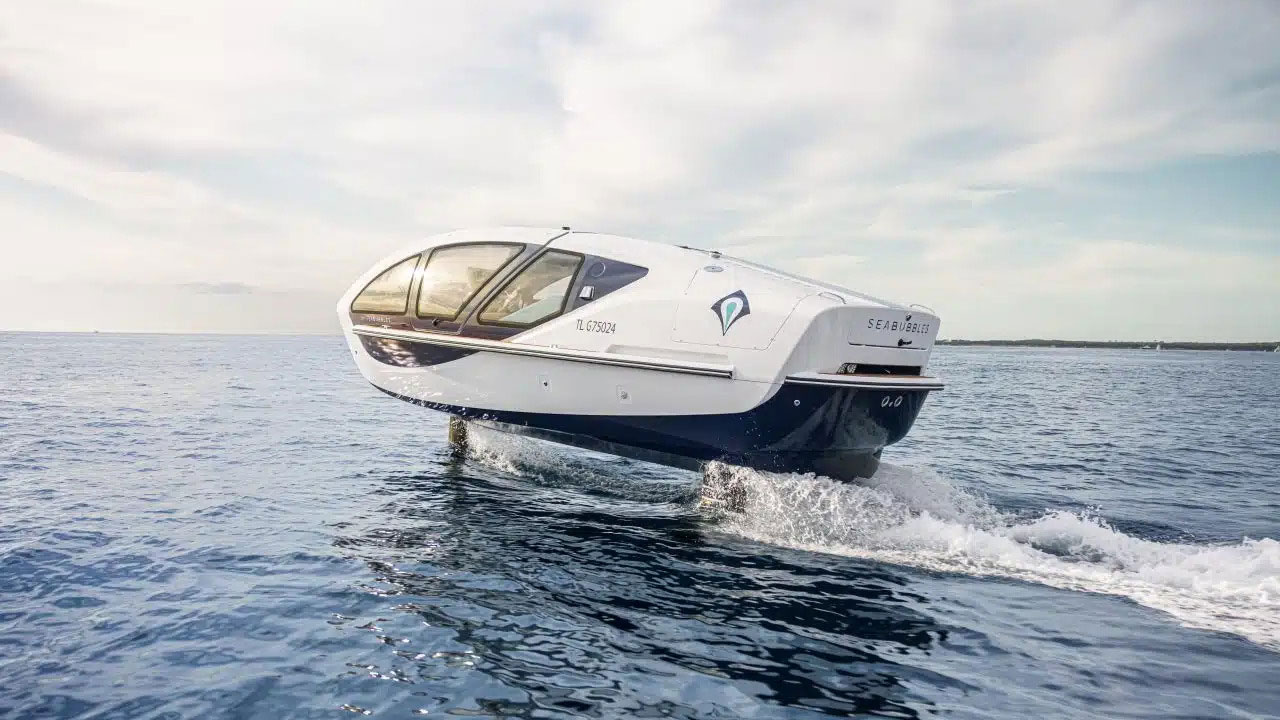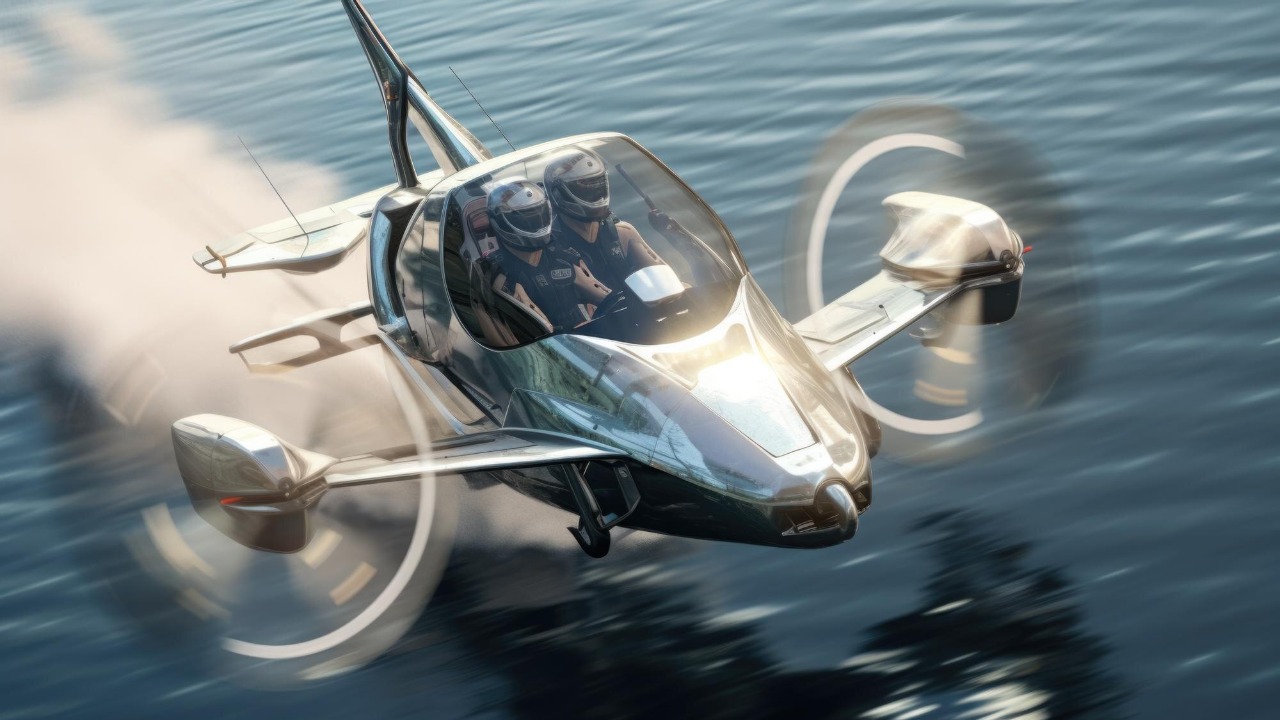
The dawn of a new era in transportation technology is marked by the development of an electric flying boat that skims the water’s surface. This innovative vehicle has captured the attention of both commercial and military sectors across the globe, promising to revolutionize travel and strategic operations. With its potential to transform how we think about mobility and logistics, the electric flying boat represents a significant leap forward in transportation.
Technological Innovation Behind the Electric Flying Boat

At the heart of this engineering marvel is a unique design that allows it to skim effortlessly across the water. This is made possible through a combination of advanced aerodynamics and cutting-edge materials, which reduce drag and increase efficiency. These boats operate on the principle of hydrofoiling, where the hull lifts above the water at high speeds, minimizing contact with the water and thus reducing resistance. This results in a faster and smoother ride compared to traditional boats.
Electric propulsion plays a pivotal role in transforming this vision into reality. By employing powerful electric motors, the flying boat not only achieves impressive speeds but also aligns with the global move towards sustainable transportation. The use of electric power drastically reduces emissions, making these boats a viable option for eco-conscious consumers. Companies such as Candela, a pioneer in electric boating, are leading the charge in this innovative field, pushing the boundaries of what is possible with electric marine vehicles.
Several key players are at the forefront of this groundbreaking innovation. Industry leaders and researchers are collaborating to perfect the technology and bring it to market. For instance, Candela has been instrumental in developing the Candela C-8, a hydrofoil boat that promises both efficiency and sustainability. Their efforts are complemented by investments from tech giants and venture capitalists eager to tap into this burgeoning market.
Commercial Interest and Potential Applications

The electric flying boat has the potential to revolutionize commercial transportation. By offering a faster and more efficient means of travel, it could redefine logistics and passenger transport across coastal regions. Imagine a world where commutes across bodies of water take a fraction of the time, reducing congestion on traditional routes and providing a unique travel experience. These boats could become a staple in tourism, offering scenic rides while minimizing environmental impact.
The eco-friendly benefits of electric-powered vehicles are significant. The maritime industry is notorious for its carbon footprint, and adopting electric flying boats can substantially reduce emissions. This aligns with global efforts to combat climate change and promote sustainable practices. Moreover, the reduced noise pollution from electric motors enhances the appeal of these boats in tourist-heavy areas, where serenity and environmental preservation are paramount.
The market potential for electric flying boats is vast, with investors recognizing the opportunity for growth. According to reports, substantial investments are being channeled into this sector, with projections indicating a promising future for these innovative vessels. As the technology matures, we can expect an increase in adoption rates, leading to a more competitive and diversified market.
Military Interest and Strategic Advantages

The military potential of electric flying boats is equally compelling. Their speed, stealth, and efficiency make them ideal for a range of tactical applications. Militaries around the world are exploring how these boats can be integrated into their operations, from rapid troop deployment to reconnaissance missions. The ability to traverse water bodies quickly and quietly provides a strategic advantage, particularly in coastal and archipelagic regions.
Electric flying boats also offer enhanced surveillance and reconnaissance capabilities. Their low noise emissions and high speed enable stealthy operations, crucial for intelligence-gathering missions. These boats can be equipped with advanced sensors and communication systems, enhancing situational awareness and operational effectiveness.
However, the integration of this technology into military arsenals raises important security implications. The proliferation of electric flying boats could shift global military dynamics, potentially sparking new conflicts or intensifying existing ones. As nations strive to maintain technological superiority, the development and deployment of these vessels must be carefully managed to prevent escalation.
Challenges and Future Prospects

Despite the promise of electric flying boats, several challenges must be addressed to achieve widespread adoption. Technical hurdles such as battery life and charging infrastructure remain significant obstacles. Moreover, regulatory frameworks need to be developed to ensure the safe and efficient operation of these vehicles in shared waterways.
Innovation and research continue to drive the evolution of this technology. As advancements in battery technology and materials science progress, we can anticipate improvements in the range and performance of electric flying boats. Collaboration between industry leaders and research institutions will be vital in overcoming existing barriers and unlocking the full potential of this technology.
Global collaboration is crucial in advancing electric flying boats for peaceful and strategic uses. International partnerships can facilitate knowledge exchange and resource sharing, accelerating technological advancements. By working together, nations can harness the potential of these innovative vessels while promoting stability and security on the global stage.
Public Perception and Societal Impact

The public reception of electric flying boats is overwhelmingly positive, with many expressing enthusiasm for this cutting-edge technology. The prospect of faster, greener travel options resonates with consumers, particularly in coastal regions where traditional transportation methods face limitations. As awareness grows, so too does the anticipation for the widespread availability of these boats.
The societal implications of integrating electric flying boats are profound. They have the potential to reshape lifestyles and economies by providing new opportunities for commerce and recreation. Coastal communities could see increased economic activity as travel becomes more accessible and efficient. However, careful consideration must be given to the impact on traditional industries and the environment.
Ethical considerations also come into play with the rise of electric flying boats. Privacy concerns may arise as these vessels become equipped with advanced surveillance technologies. Safety remains a paramount concern, requiring rigorous testing and regulation to ensure the protection of passengers and the environment. Balancing the benefits and risks will be essential in realizing the full potential of this transformative technology.